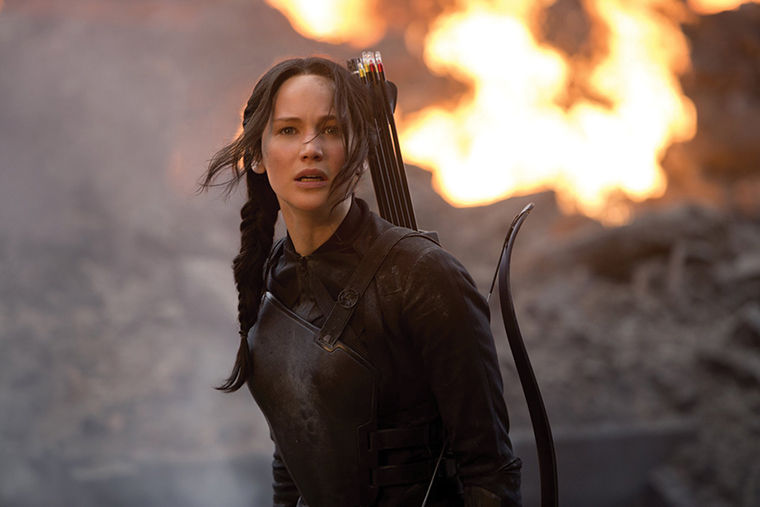‘Mockingjay – Part 1’ leaves fans hungry for seconds
Jennifer Lawrence reprises her role as Katniss Everdeen in the latest installment of “The Hunger Games” film series.
December 8, 2014
Studios have milked the concept of breaking book-to-film adaptations into two parts since Warner Bros. Entertainment opted to bisect the final installment of “Harry Potter.” Making a few million extra dollars is any executive’s dream, and additional films in a successful franchise accomplishes just that. It worked wonders for “Harry Potter,” “Twilight” and “The Hobbit” series. In theory, it should have worked for “The Hunger Games,” too. But while “The Hunger Games: Mockingjay – Part 1” aims to do so, there is simply not enough action to justify producing two films.
Beginning shortly after the events of the previous film, “The Hunger Games: Catching Fire,” Katniss Everdeen (Jennifer Lawrence) finds herself in the ruins of District 13. She survived her second bout in the Hunger Games and has become a symbol of rebellion against the ruthless President Snow (Donald Sutherland). Katniss, along with old friends and ambiguous new allies, works to gain the support of the other districts in order to defeat Snow and the Capitol.
The third installment spreads itself too thin across its two-hour running time. The film drags on, providing unnecessary exposition building suspense that ultimately leads to an underwhelming conclusion. The payoffs possibly may become apparent in “Mockingjay – Part 2,” but audiences will not be fulfilled until November 2015, when the second part is set to premiere. Even though the final scenes do a great job of setting up the next movie, most of what comes before is simply filler. It is shockingly light on action compared to its predecessors, which slows the pace as if the plot slammed into a brick wall. While an action-light film is not bad, the entirety of Part 1 could have been condensed into an hour.
The viewer’s time is not completely wasted, though. The tense action is well shot and edited, playing out more like a war or spy film, even if it is sparse. Francis Lawrence, who directed the second film in the series, “The Hunger Games: Catching Fire,” does his best to work with the dry script by incorporating thrilling direction. Lawrence knows how to create a sense of urgency when little is happening on screen. Throughout the film, Katniss watches as her friend and teammate in the Hunger Games, Peeta Mellark (Josh Hutcherson), recites a pro-government propaganda speech on the countrywide broadcast, brainwashed by the Capitol. As time progresses, he begins to look thinner and gaunt, leaving the audience to wonder how far the film will stretch its characters before they break.
The film’s biggest strength is how it builds off of the first two films. At the end of the first, Katniss had planted the seeds of revolution in the other districts. The true effects of the revolution are revealed to the audience at the same time as they are to Katniss. She travels to one of the war-torn districts and enters a makeshift hospital filled with injured and dying men, women and children, creating a sobering image for a film adapted from a young-adult novel. There are real revolutions like this happening around the world today. Movie theaters in several countries, including China and Thailand, have removed the film, fearing that audiences will begin their own revolution, according to a Nov. 20 New York Times report.
“The Hunger Games: Mockingjay – Part 1” slows down the pacing of the series with a film that feels like it ends before it truly begins. It may build from previous installments but does little to distinguish itself. Maybe Part 2 will complement Part 1 with an explosive conclusion, but anxious viewers will have to wait another year to find out.








